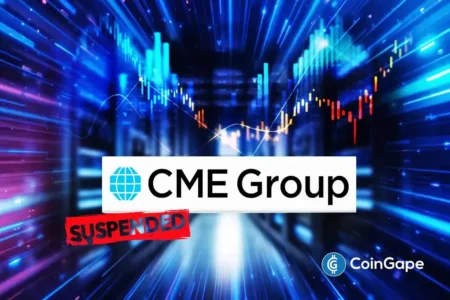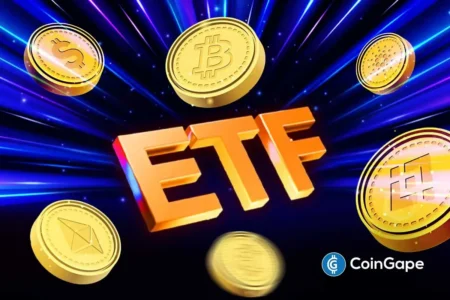JPMorgan’s Bitcoin-Backed Structured Notes: A Game Changer Recognized by Industry Experts
SkyBridge Capital founder Anthony Scaramucci has recently commented on JPMorgan Chase’s groundbreaking decision to introduce Bitcoin-backed structured notes that will track the performance of BlackRock’s Bitcoin ETF (IBIT). This significant development has evoked strong reactions from market analysts and cryptocurrency advocates alike, suggesting that it marks a pivotal moment for institutional adoption of Bitcoin. In his commentary, Scaramucci emphasized that this offering illustrates a momentous shift in how traditional finance is starting to embrace digital currencies.
A Milestone for Institutional Adoption
Scaramucci’s assertion that JPMorgan’s Bitcoin-backed bond is a colossal event comes amid a growing trend of financial institutions integrating cryptocurrency into their services. According to a recent SEC filing, JPMorgan—a titan in the banking industry with approximately $4 trillion in assets under management—plans to offer these structured notes. Investors engaging with these notes could potentially see gains of up to 16% if the shares close at or above a designated level by the automatic call date set for December 21, 2026. This unveils a strategic move towards not just recognizing Bitcoin’s value but generating investment opportunities around it.
Coinciding with Scaramucci’s sentiments, Bitcoin advocate Dennis Porter expressed his surprise that there hasn’t been more media attention geared toward this development. Both experts suggest that JPMorgan’s initiative is not merely a business move; it is a validation of Bitcoin’s legitimacy as a scarce and valuable asset class. This burgeoning interest from large financial institutions signifies a transformative step that may attract more investors into the crypto space.
The Mechanics Behind Structured Notes
Delving deeper into the mechanics of these structured notes, they are tailored to afford investors risk-adjusted returns based on the performance of Bitcoin through the IBIT ETF. If the ETF underperforms and falls short of the target price, investors can capitalise on leveraged gains up to 1.5x, provided they retain the notes until the end of 2028. However, this offering is not without risks. If the price of the IBIT ETF falls by 40% or more, investors stand to incur losses on their capital. Nevertheless, a protective mechanism assures investors will receive their principal as long as the ETF’s price does not dip more than 30% by 2028.
This layered approach effectively packages the risks and rewards in a manner that is palatable to traditional investors, showcasing JPMorgan’s efforts to make Bitcoin investments more mainstream. Additionally, the structured product stands as a testament to the bank’s evolving outlook toward cryptocurrency, transitioning from skepticism to developing tailored investment vehicles.
Crypto’s Evolving Narrative: From Skepticism to Acceptance
Historically, JPMorgan’s CEO, Jamie Dimon, has been known for his critical stance on Bitcoin, likening it to a "decentralized Ponzi scheme." However, as the cryptocurrency landscape evolves, even skeptics are beginning to sense the undeniable momentum behind assets like Bitcoin. Adam Livingston, another Bitcoin advocate, contends that this new financial product signifies a noteworthy concession from JPMorgan: that Bitcoin has indeed "won" a significant foothold in the financial ecosystem.
Livingston posits that by launching Bitcoin-backed bonds, JPMorgan is acknowledging that the cryptocurrency has become too significant to ignore and too lucrative not to explore as an investment option. This marks a significant change in narrative, indicating a readiness within major banks to delve into the opportunities presented by digital currencies.
Strategic Risk Management for JPMorgan
Livingston further details that JPMorgan’s design of the structured notes includes an early-call trigger, a strategy intended to protect the bank in the event that Bitcoin’s price surges above preset levels by next year. This tactic serves to limit the risk associated with a potential climb in Bitcoin’s market value, ensuring a structured financial path that caps the bank’s liabilities while providing a lucrative investment vehicle for clients.
This careful calculation, according to Livingston, suggests that JPMorgan anticipates a bullish trend for Bitcoin potentially leading to significant price movements by 2026. The bank appears to be hedging its bets while still providing clients an enticing opportunity to engage with Bitcoin investments through structured financial instruments.
Implications for the Future of Bitcoin and Traditional Finance
These advancements in JPMorgan’s cryptocurrency offerings indicate that major financial institutions are beginning to embrace Bitcoin not merely as a speculative asset, but as a legitimate component of an investment portfolio. Furthermore, JPMorgan’s structured notes may serve as a model for other banks looking to navigate the complexities of Bitcoin and cryptocurrency in general.
The interest from a bank of JPMorgan’s stature could lead to an influx of institutional capital into digital currencies, potentially enhancing Bitcoin’s stability and acceptance in mainstream finance. This not only offers the potential for significant financial returns for investors but may also contribute to the broader legitimacy of the cryptocurrency market.
Conclusion: A Shift in the Financial Paradigm
In summary, the introduction of Bitcoin-backed structured notes by JPMorgan Chase represents a significant shift in institutional finance, signaling broader acceptance and appreciation of Bitcoin as a viable asset class. Leaders like Anthony Scaramucci and Dennis Porter are spotlighting the crucial importance of this move, as it reflects an evolving financial narrative that acknowledges the unprecedented nature of cryptocurrency. As more institutions follow suit, we may be witnessing an essential transition towards the mainstream integration of digital currencies in traditional finance, heralding a new era for investing and asset management.
















